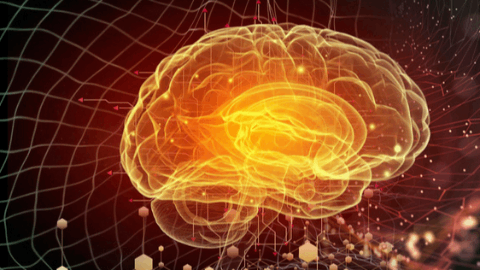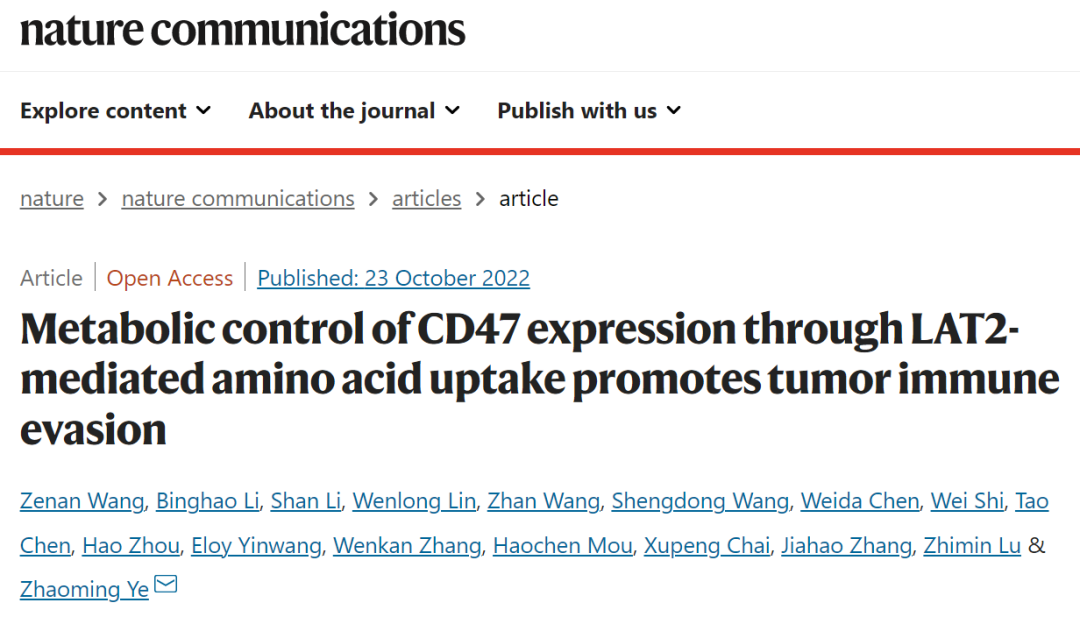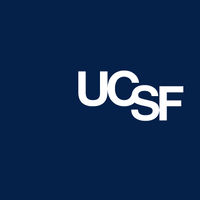预约演示
更新于:2025-05-07
LAT x LAT2
更新于:2025-05-07
关联
1
项与 LAT x LAT2 相关的药物作用机制 LAT modulators [+2] |
非在研适应症- |
最高研发阶段申请上市 |
首次获批国家/地区- |
首次获批日期1800-01-20 |
10
项与 LAT x LAT2 相关的临床试验NCT06474533
Fluoroethyltyrosine for the Evaluation of Intracranial Neoplasm
This is a single center study investigating the use of Fluoroethyltyrosine (FET) in the detection of brain tumors. FET accumulates in malignant cells within intracranial neoplasms and can be used to detect recurrent disease and characterize grade of glial neoplasms.
开始日期2024-06-21 |
NCT05632562
Multiparametic Metabolic and Hypoxic PET/MRI for Disease Assessment in High Grade Glioma
This feasibility study will assess the clinical potential of a new imaging approach to detect viable high grade glioma (HGG) in pediatric and adult patients after standard of care radiation therapy (RT) with or without concurrent temozolomide (TMZ). Study participants will undergo simultaneous positron emission tomography/magnetic resonance imaging (PET/MRI) with O-([2-[F-18]fluoroethyl)-L-tyrosine (FET, amino acid transport) and 1H-1-(3-[F-18]fluoro-2-hydroxypropyl)-2-nitroimidazole (FMISO, hypoxia) at the time of standard of care imaging after completion of RT. The presence of viable tumor at this time point will be assessed on a per patient basis. Study participants will be followed clinically and with standard of care (SOC) imaging for up to 2 years after completion of PET/MRI to determine the nature of lesions seen on investigational imaging and to obtain patient outcome data. The imaging data will also be used to develop a semi-automated workflow suitable for implementation in clinical trials and standard of care PET/MRI studies.
开始日期2024-03-07 |
NCT05083936
Prospective Comparison of 18F-FDG and 18F-FET PET for Response Evaluation in Patients With Primary Central Nervous System Lymphoma
The overall goal of this imaging trial is to prospectively compare the usefulness of 18F-FDG PET and 18F-FET PET in evaluating treatment response and predicting prognosis in patients with central nervous system lymphoma.
开始日期2021-08-27 |
申办/合作机构 |
100 项与 LAT x LAT2 相关的临床结果
登录后查看更多信息
100 项与 LAT x LAT2 相关的转化医学
登录后查看更多信息
0 项与 LAT x LAT2 相关的专利(医药)
登录后查看更多信息
57
项与 LAT x LAT2 相关的文献(医药)2023-03-17·Biomolecules
Feasibility of Transport of 26 Biologically Active Ultrashort Peptides via LAT and PEPT Family Transporters.
Article
作者: Khavinson, Vladimir Khatskelevich ; Rudskoy, Andrey Ivanovich ; Linkova, Natalia Sergeevna ; Petukhov, Michael Gennadievich
2022-03-01·Pharmacotherapy: The Journal of Human Pharmacology and Drug Therapy3区 · 医学
Impact of concurrent gabapentin or pregabalin with high‐dose melphalan in patients with multiple myeloma undergoing autologous hematopoietic stem cell transplant
3区 · 医学
Article
作者: Nooka, Ajay K. ; Joseph, Nisha S. ; Lonial, Sagar ; Bryson, Evan B. ; Goyal, Subir ; Hall, Kevin H. ; Kaufman, Jonathan L. ; Maples, Kathryn T. ; Harvey, Robert Donald ; Hofmeister, Craig C. ; Sivakumar, Akhilesh
2020-06-01·Experimental and Clinical Endocrinology & Diabetes
Molecular Mechanisms of Thyroid Hormone Transport by l-Type Amino
Acid Transporter
Review
作者: Krause, Gerd ; Hinz, Katrin Manuela
3
项与 LAT x LAT2 相关的新闻(医药)2024-08-27
MELBOURNE, Australia, Aug. 28, 2024 /PRNewswire/ -- Telix Pharmaceuticals Limited (ASX: TLX, Telix, the Company) today announces it has submitted a New Drug Application (NDA) to the United States (U.S.) Food and Drug Administration (FDA) for TLX101-CDx, (Pixclara®[1], 18F-floretyrosine or 18F-FET), an investigational PET[2] agent for the characterisation of progressive or recurrent glioma (brain cancer) from treatment related changes in both adult and pediatric patients.
Given the potential to address significant unmet medical need, Pixclara®1 has been granted Orphan Drug[3] and Fast Track[4] designation by the FDA, which facilitates expedited review and closer consultation with the agency during the review process. FET PET (Pixclara®1) is already included in international clinical practice guidelines for the imaging of gliomas[5], however there is currently no FDA-approved targeted amino acid PET agent for adult and pediatric brain cancer imaging commercially available in the U.S.
There is a critical unmet need to improve the diagnosis and management of glioma, particularly in the post-treatment setting. With low survival rates and the need to make rapid decisions, precision imaging is paramount. Subject to regulatory approval, Pixclara®1 has the potential to address this need, enabling patients to receive greater clarity in their diagnosis and treatment decision making. Pixclara®1 is also being developed as the "companion" theranostic imaging agent for TLX101, Telix's investigational neuro-oncology drug candidate, which targets the same amino acid transporter mechanism with therapeutic targeted radiation.
Kevin Richardson, Chief Executive Officer, Telix Precision Medicine, stated, "Gliomas are the most common primary brain tumours of the central nervous system. Conventional imaging with MRI[6] often yields inconclusive results in characterising recurrent disease and therefore delays time-sensitive decision making4. Limitations of conventional imaging techniques include the lack of biological specificity, dependency on blood-brain barrier disruption, and an inherent inability to differentiate between tumour progression or treatment-related causes[7]. Telix's filing of this NDA for Pixclara®1 is an important milestone, reflecting our commitment to improved and accessible neuro-oncology imaging in the U.S., and taking us one step closer to commercial availability in 2025, subject to FDA approval."
About TLX101-CDx
TLX101-CDx (Pixclara®1) is a PET imaging agent, which has been granted fast track and orphan drug designations by the FDA as an imaging agent for the characterisation of glioma. TLX101-CDx targets membrane transport proteins known as LAT1 and LAT2[8]. This enables TLX101-CDx to be potentially utilised as a companion diagnostic agent to TLX101 (4-L-[131I] iodo-phenylalanine, or 131I-IPA), Telix's LAT1-targeting investigational glioblastoma (GBM) therapy, currently under investigation in the IPAX-2[9] and IPAX-Linz[10] studies.
About gliomas in the U.S.
Gliomas are very diffusely infiltrative tumours that affect the surrounding brain tissue. They are the most common form of central nervous system (CNS) neoplasm that originates from glial cells, accounting for approximately 30% of all brain and CNS tumours and 80% of all malignant brain tumours[11]. In the U.S., there are six cases of gliomas diagnosed per 100,000 people every year. GBM is a high-grade glioma and the most common and aggressive form of primary brain cancer, with approximately 22,000 new cases diagnosed annually in the U.S.[12]. The mainstay of treatment for GBM comprises surgical resection, followed by combined radiotherapy and chemotherapy. Despite such treatment, recurrence occurs in almost all patients[13], with an expected survival duration of 12-15 months from diagnosis[14].
About
Telix Pharmaceuticals Limited
Telix is a biopharmaceutical company focused on the development and commercialisation of diagnostic and therapeutic radiopharmaceuticals and associated medical devices. Telix is headquartered in Melbourne, Australia, with international operations in the United States, Europe (Belgium and Switzerland), and Japan. Telix is developing a portfolio of clinical and commercial stage products that aims to address significant unmet medical needs in oncology and rare diseases. Telix is listed on the Australian Securities Exchange (ASX: TLX).
Telix's lead imaging product, gallium-68 (68Ga) gozetotide injection (also known as 68Ga PSMA-11 and marketed under the brand name Illuccix®), has been approved by the U.S. Food and Drug Administration (FDA)[15], by the Australian Therapeutic Goods Administration (TGA) [16], and by Health Canada[17]. No other Telix product has received a marketing authorisation in any jurisdiction.
Visit for further information about Telix, including details of the latest share price, announcements made to the ASX, investor and analyst presentations, news releases, event details and other publications that may be of interest. You can also follow Telix on X and LinkedIn.
Telix Investor Relations
Ms. Kyahn Williamson
Telix Pharmaceuticals Limited
SVP Investor Relations and Corporate Communications
Email: [email protected]
This announcement has been authorised for release by the Telix Pharmaceuticals Limited Disclosure Committee on behalf of the Board.
Legal Notices
You should read this announcement together with our risk factors, as disclosed in our most recently filed reports with the Australian Securities Exchange (ASX) or on our website.
The information contained in this announcement is not intended to be an offer for subscription, invitation or recommendation with respect to securities of Telix Pharmaceuticals Limited (Telix) in any jurisdiction, including the United States. The information and opinions contained in this announcement are subject to change without notification. To the maximum extent permitted by law, Telix disclaims any obligation or undertaking to update or revise any information or opinions contained in this announcement, including any forward-looking statements (as referred to below), whether as a result of new information, future developments, a change in expectations or assumptions, or otherwise. No representation or warranty, express or implied, is made in relation to the accuracy or completeness of the information contained or opinions expressed in the course of this announcement.
This announcement may contain forward-looking statements that relate to anticipated future events, financial performance, plans, strategies or business developments. Forward-looking statements can generally be identified by the use of words such as "may", "expect", "intend", "plan", "estimate", "anticipate", "believe", "outlook", "forecast" and "guidance", or the negative of these words or other similar terms or expressions. Forward-looking statements involve known and unknown risks, uncertainties and other factors that may cause our actual results, levels of activity, performance or achievements to differ materially from any future results, levels of activity, performance or achievements expressed or implied by these forward-looking statements. Forward-looking statements are based on Telix's good-faith assumptions as to the financial, market, regulatory and other risks and considerations that exist and affect Telix's business and operations in the future and there can be no assurance that any of the assumptions will prove to be correct. In the context of Telix's business, forward-looking statements may include, but are not limited to, statements about: the initiation, timing, progress and results of Telix's preclinical and clinical trials, and Telix's research and development programs; Telix's ability to advance product candidates into, enrol and successfully complete, clinical studies, including multi-national clinical trials; the timing or likelihood of regulatory filings and approvals for Telix's product candidates, manufacturing activities and product marketing activities; Telix's sales, marketing and distribution and manufacturing capabilities and strategies; the commercialisation of Telix's product candidates, if or when they have been approved; Telix's ability to obtain an adequate supply of raw materials at reasonable costs for its products and product candidates; estimates of Telix's expenses, future revenues and capital requirements; Telix's financial performance; developments relating to Telix's competitors and industry; and the pricing and reimbursement of Telix's product candidates, if and after they have been approved. Telix's actual results, performance or achievements may be materially different from those which may be expressed or implied by such statements, and the differences may be adverse. Accordingly, you should not place undue reliance on these forward-looking statements.
©2024 Telix Pharmaceuticals Limited. The Telix Pharmaceuticals®, Illuccix® and Pixclara® names and logos are trademarks of Telix Pharmaceuticals Limited and its affiliates – all rights reserved. Pixclara trade name is subject to final regulatory approval.
Logo -
孤儿药快速通道上市批准
2024-04-16
FDA Fast Track designation granted for TLX101-CDx for glioma (brain cancer) imaging
Collaboration agreement announced for joint development and commercialisation with UCSF
PharmaLogic announced as commercial manufacturing and pharmacy distribution partner
April 16, 2024 (GLOBE NEWSWIRE) -- Telix Pharmaceuticals Limited (ASX: TLX, Telix, the Company) today announces that the United States (U.S.) Food and Drug Administration (FDA) has granted Fast Track designation1 for the Company’s investigational glioma imaging product, TLX101-CDx (Pixclara™2, 18F-floretyrosine or 18F-FET).
The granted Fast Track designation is for the characterisation of progressive or recurrent glioma using positron emission tomography (PET). Concurrently, Telix is in the final stages of preparing its U.S. New Drug Application (NDA) for TLX101-CDx in this initial indication, in both adult and paediatric patients. This designation enables expedited review and closer consultation with the FDA during the review process.
Amino acid PET is currently included in U.S. and European guidelines for the imaging of gliomas3, however there is no FDA-approved targeted PET agent for brain cancer imaging in the U.S. Telix’s goal is to make this product commercially available in the U.S., significantly increasing patient access to this important imaging agent.
Telix has an exclusive research collaboration and data license agreement with the University of California, San Francisco (UCSF). UCSF is one of the leading academic centres conducting clinical research into the use of FET PET4 in a variety of neurological malignancies. This academic-industrial collaboration supporting joint development and commercialisation will enable Telix to offer TLX101-CDx access as a commercial product in the U.S., subject to regulatory approval.
Thomas A. Hope, MD, Professor of Radiology at UCSF, said, “There is critical unmet need to improve the diagnosis and management of glioma, particularly in the post-treatment setting, and we are excited to leverage the clinical experience at UCSF to help make this investigational agent more widely available. 18F-FET has the potential to help determine if a glioma is truly progressing or undergoing a treatment-induced change, known as pseudo-progression, where MRI5 – the standard of care – can often be inconclusive.”
David N. Cade, MD, Group Chief Medical Officer at Telix, stated, “This unique collaboration between Dr. Hope’s team at UCSF and Telix will enable us to utilise our collective clinical data and expertise to facilitate nationwide access to FET PET in the United States while fostering ongoing research and development with the objective of expanding the clinical utility of this advanced imaging agent for the benefit of patients.”
Telix has selected PharmaLogic Holdings Corp (PharmaLogic) as its commercial manufacturing and pharmacy distribution partner, to supply finished unit doses of TLX101-CDx to the U.S. market.
Steven Chilinski, President and CEO at Pharmalogic, added, “Telix has quickly grown into a global theranostics leader with an impressive product pipeline. Through this partnership, we’re delighted to bring this imaging agent to glioma patients in the U.S. upon regulatory approval.”
Richard Valeix, Group Chief Commercial Officer at Telix, continued, “These milestones represent significant progress as we bring this investigational product closer to market in the U.S. and commercial launch. PharmaLogic has rapidly developed an excellent reputation for manufacturing radiopharmaceuticals to rigorous quality standards and will deliver a key component of Telix’s supply chain strategy for TLX101-CDx in the U.S., subject to regulatory approval.”
TLX101-CDx (Pixclara™2) is a PET imaging agent, which has been previously granted orphan drug designation (ODD) in the U.S. as an imaging agent for the management of glioma6. TLX101-CDx targets membrane transport proteins known as LAT1 and LAT27. This enables TLX101-CDx to be potentially utilised as a companion diagnostic agent to TLX101 (4-L-[131I] iodo-phenylalanine, or 131I-IPA), Telix’s LAT1-targeting investigational glioblastoma (GBM) therapy, currently under investigation in the and IPAX-28 and IPAX-Linz9 studies.
Gliomas are very diffusely infiltrative tumours that affect the surrounding brain tissue. They are the most common form of central nervous system (CNS) neoplasm that originates from glial cells, accounting for approximately 30% of all brain and CNS tumours and 80% of all malignant brain tumours10. In the U.S., there are six cases of gliomas diagnosed per 100,000 people every year. GBM is a high-grade glioma and the most common and aggressive form of primary brain cancer, with approximately 22,000 new cases diagnosed annually in the U.S.11. The mainstay of treatment for GBM comprises surgical resection, followed by combined radiotherapy and chemotherapy. Despite such treatment, recurrence occurs in almost all patients12, with an expected survival duration of 12-15 months from diagnosis13.
PharmaLogic is a world-class contract development and manufacturing organisation specialising in novel diagnostic imaging and therapeutic radiopharmaceuticals for the treatment of cancers and other malignancies. In addition to an established and reliable network of radiopharmacies, PharmaLogic has decades of expertise in drug development from discovery, through manufacturing and commercialisation. The Company seeks to take the lead in the advancement of radiopharmaceutical technology for the benefit of patients worldwide. For more information, visit: www.radiopharmacy.com.
Telix is a biopharmaceutical company focused on the development and commercialisation of diagnostic and therapeutic radiopharmaceuticals and associated medical devices. Telix is headquartered in Melbourne, Australia, with international operations in the United States, Europe (Belgium and Switzerland), and Japan. Telix is developing a portfolio of clinical and commercial stage products that aims to address significant unmet medical needs in oncology and rare diseases. Telix is listed on the Australian Securities Exchange (ASX: TLX).
Telix’s lead imaging product, gallium-68 (68Ga) gozetotide injection (also known as 68Ga PSMA-11 and marketed under the brand name Illuccix®), has been approved by the FDA14, by the Australian Therapeutic Goods Administration (TGA)15, and by Health Canada16. No other Telix product has received a marketing authorisation in any jurisdiction.
1 Fast Track is a process designed to facilitate the development, and expedite the review of drugs to treat serious conditions and fill an unmet medical need. The purpose is to get important new drugs to the patient earlier. More: https://www.fda.gov/patients/fast-track-breakthrough-therapy-accelerated-approval-priority-review/fast-track.
2 Brand name subject to final regulatory approval.
3 Joint European Association of Nuclear Medicine//European Association of Neurooncology/Response Assessment in Neurooncology practice guidelines/Society for Nuclear Medicine and Molecular Imaging procedure standards for the clinical use of PET imaging in gliomas.
4 Positron emission tomography with 18F-floretyrosine.
5 Magnetic resonance imaging.
6 Telix ASX disclosure 6 October 2020.
7 Large amino acid transporters 1 and 2.
8 Telix media release 8 August 2023. ClinicalTrials.gov ID: NCT05450744.
9 Telix media release 22 November 2022.
10 Goodenberger et al. Cancer Genet. 2012.
11 Ostrom 2022, CBTRUS (Central Brain Tumor Registry of the United States) Statistical Report.
12 Park et al. Journal of Clinical Oncology. 2010.
13 Ostrom et al. Neuro Oncol. 2018.
14 Telix ASX disclosure 20 December 2021.
15 Telix ASX disclosure 2 November 2021.
16 Telix ASX disclosure 14 October 2022.
The content above comes from the network. if any infringement, please contact us to modify.

引进/卖出孤儿药上市批准快速通道
2022-10-26
·生物谷
这些发现揭示了巨噬细胞和肿瘤细胞之间的相互调节在肿瘤免疫逃逸中起着关键作用,并强调了干预LAT2介导的氨基酸摄取,具有改善癌症治疗效果的潜力。
骨肉瘤(Osteosarcoma)是最常见的原发性骨恶性肿瘤。自1970年代以来,化疗显著提高了骨肉瘤患者的总体生存期。目前,手术结合新辅助化疗已经成为骨肉瘤的规范化治疗方法。顺铂、阿霉素、甲氨蝶呤和异环磷酰胺的组合化疗方案也已经使用了几十年。
尽管化疗显著提高了骨肉瘤的治疗效果,但骨肉瘤的临床预后仍不理想。约三分之一的骨肉瘤患者对化疗药物反应不佳,容易出现复发和转移,5年生存率仅为5-20%。化疗耐药和免疫逃逸已成为骨肉瘤治疗的主要挑战,因此,需要更有效的策略来提高患者的生存期。
2022年10月23日,浙江大学医学院附属第二医院叶招明教授团队在 Nature Communications 期刊发表了题为:Metabolic control of CD47 expression through LAT2-mediated amino acid uptake promotes tumor immune evasion 的研究论文。
该研究揭示了化疗诱导的巨噬细胞吞噬抑制的关键机制,化疗会诱导巨噬细胞分泌IL-18,上调肿瘤细胞的氨基酸转运体LAT2的表达,进而上调CD47表达,抑制巨噬细胞的吞噬作用,导致肿瘤细胞的免疫逃逸。
该研究还表明,抑制LAT2可以通过下调肿瘤细胞的CD47表达,增强肿瘤细胞的巨噬细胞浸润和吞噬作用,并使小鼠骨肉瘤对化疗药物阿霉素治疗敏感。
这些发现促进了我们对化疗耐药机制的理解,并强调了干预LAT2介导的氨基酸摄取具有增强癌症治疗的潜力。
癌细胞免疫逃逸的能力在癌症复发和转移中起着至关重要的作用。尽管化疗药物部分通过刺激免疫系统来清除肿瘤细胞,但越来越多的证据表明,化疗后的肿瘤对抗肿瘤免疫的抵抗力增强。
巨噬细胞是骨肉瘤中最丰富的免疫细胞类型,其密度与临床结果之间的关系仍然矛盾。对化疗前骨肉瘤标本的分析显示,巨噬细胞密度增加与转移抑制和转移无进展生存期延长有关,而对化疗后骨肉瘤标本的研究显示,与没有转移的骨肉瘤患者相比,可检测到转移的骨肉瘤患者肿瘤中有更多的巨噬细胞。这些结果表明,在骨肉瘤化疗过程中,癌细胞通过一些未知的机制加强了对巨噬细胞的免疫逃逸。
CD47,是人体中由CD47基因编码的跨膜蛋白,属于免疫球蛋白超家族。自20世纪80年代以来,CD47就被发现在多种人类血液肿瘤及膀胱癌、脑瘤等部分实体瘤中高表达。
2009年,斯坦福大学医学院 Irving Weissman 教授在 Cell 发表论文,表明肿瘤细胞高表达CD47,并通过与巨噬细胞表面的信号调节蛋白α(SIRPα)结合,释放 Don't Eat Me(别吃我)信号,从而防止肿瘤细胞被巨噬细胞吞噬。
在骨肉瘤中,CD47在骨肉瘤组织中的表达水平通常高于周围正常组织,CD47的高表达与骨肉瘤患者生存率差相关。通过抑制CD47,激活肿瘤相关巨噬细胞增强了巨噬细胞介导的肿瘤细胞清除,抑制了小鼠骨肉瘤的生长和肺转移。CD47阻断剂在晚期血癌患者中也显示出很有希望的活性。目前正在设计临床试验,以评估抑制CD47是否能增强骨肉瘤患者对其他免疫疗法反应。
然而,骨肉瘤细胞中CD47的表达是否在化疗反应中受到调控,从而促进肿瘤免疫逃避,目前尚不清楚。
癌细胞需要充足的营养来维持它们的快速生长和增殖。氨基酸转运蛋白对维持癌细胞的高水平代谢和蛋白质合成至关重要。因此,在许多原发性人类肿瘤以及各种癌症细胞系中,观察到了通过上调特定转运体来增强氨基酸的吸收。
L型氨基酸转运体(LATs)是中性氨基酸(如谷氨酰胺和亮氨酸)的主要的不依赖钠离子的运输系统。到目前为止,已经发现了四种LATs(LAT1、LAT2、LAT3和LAT4),阻断LAT1已成为癌症治疗中一个有吸引力的策略。但氨基酸摄取与肿瘤免疫检查点调节之间的关系尚不清楚。
在这项研究中,研究团队发现,化疗后的骨肉瘤中CD47上调,且这种上调与患者死亡率相关。
从机制上说,化疗促进了巨噬细胞白细胞介素18(IL-18)的分泌,从而上调肿瘤细胞中LAT2的表达,进而大幅增强谷氨酰胺和亮氨酸的摄取,而它们是mTORC1的两种有效刺激因子。亮氨酸水平的增加和谷氨酰胺代谢增强激活了mTORC1和随后的c- Myc介导的CD47转录。LAT2缺失或用LAT抑制剂治疗,可下调肿瘤细胞的CD47表达,增强肿瘤细胞的巨噬细胞浸润和吞噬作用,并使小鼠骨肉瘤对化疗药物阿霉素治疗敏感。
这些发现揭示了巨噬细胞和肿瘤细胞之间的相互调节在肿瘤免疫逃逸中起着关键作用,并强调了干预LAT2介导的氨基酸摄取,具有改善癌症治疗效果的潜力。

免疫疗法
分析
对领域进行一次全面的分析。
登录
或

生物医药百科问答
全新生物医药AI Agent 覆盖科研全链路,让突破性发现快人一步
立即开始免费试用!
智慧芽新药情报库是智慧芽专为生命科学人士构建的基于AI的创新药情报平台,助您全方位提升您的研发与决策效率。
立即开始数据试用!
智慧芽新药库数据也通过智慧芽数据服务平台,以API或者数据包形式对外开放,助您更加充分利用智慧芽新药情报信息。
生物序列数据库
生物药研发创新
免费使用
化学结构数据库
小分子化药研发创新
免费使用



